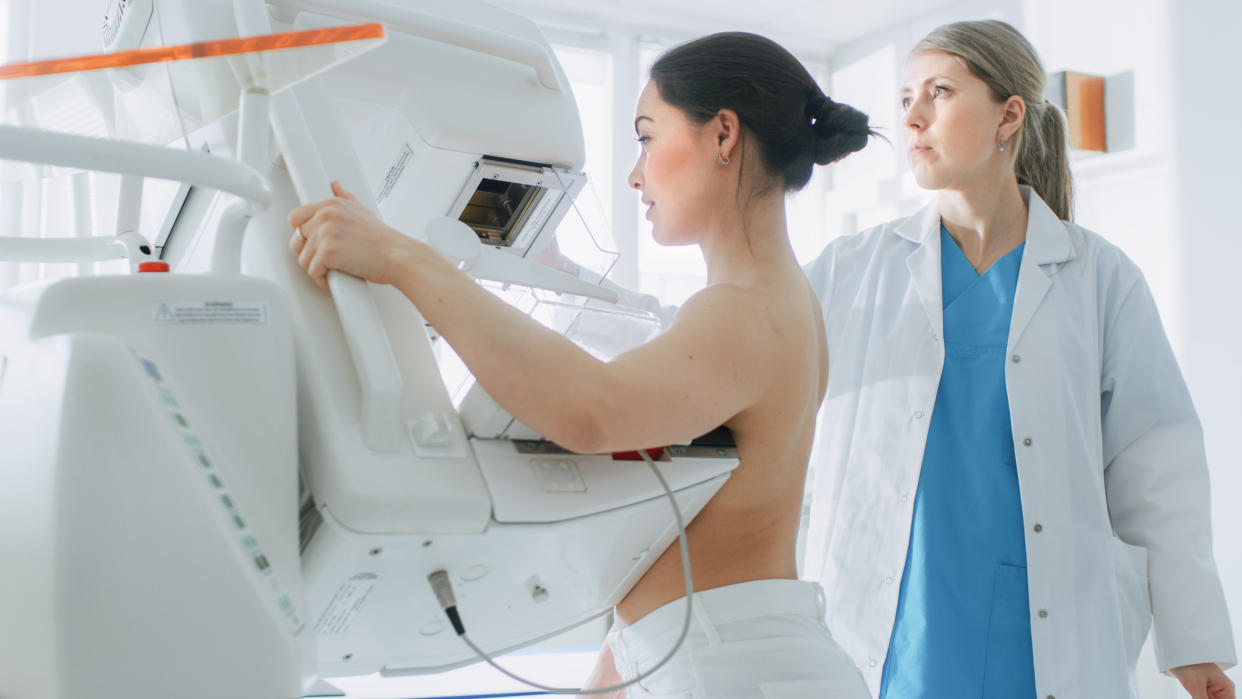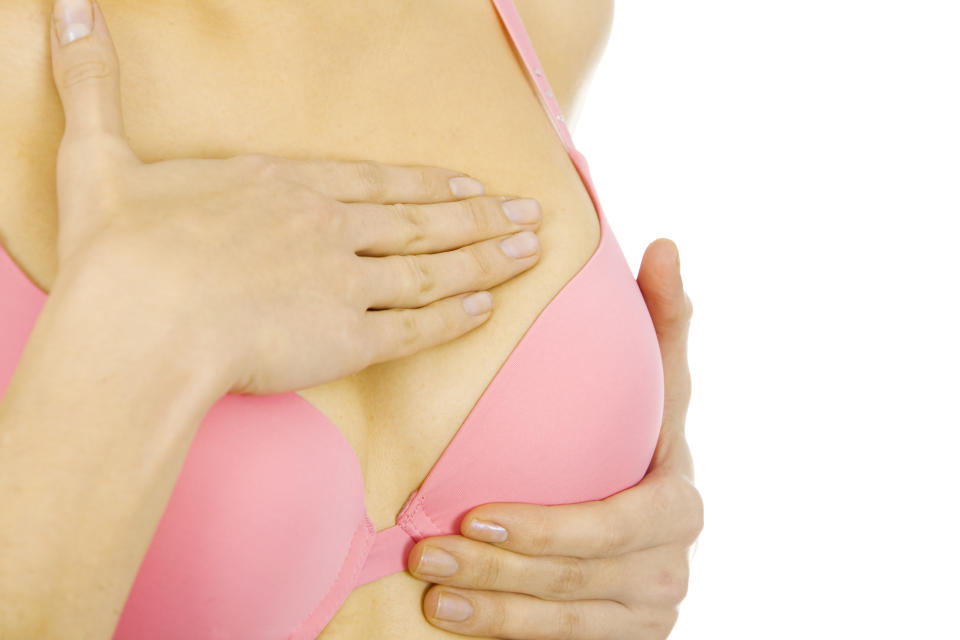Jennifer Garner gets the all-clear after a mammogram - but what does the check-up involve?

Jennifer Garner has posted a video celebrating getting the “all-clear” after a mammogram.
The 13 Going on 30 star filmed herself having an annual check-up to mark Breast Cancer Awareness Month.
The actress urged her 7.4 million followers to make the screening part of their “routine, like the dentist”.
With one in eight women developing breast cancer, Yahoo UK looks at what the screening involves and how it could save lives.
One in eight women in the UK and US will develop breast cancer at some point in their lives, statistics show.
To raise awareness, a nervous-looking Garner was filmed having a check-up, before being told her result was “perfect”.
In a post that has been viewed 1.9 million times, she told her followers how she has a screening every October.
“Having the appointment on the books makes it routine, like the dentist,” she wrote. “I know it’s scary, sisters, but just do it - the next best thing to an all clear is early detection.”
What is a mammogram - and who gets one?
With a woman’s breast cancer risk increasing with age, all those aged 50-to-71 who are registered with a GP in the UK are invited for a mammogram every three years.
Scientists are looking into whether younger women could also benefit. Women as young as 47 are therefore being invited for a screening in some parts of the country as part of a trial.
The first symptom of breast cancer is usually a lump or area of thickened tissue in the chest. However, early cases of the disease may have no warning signs.
Mammograms are X-rays that can spot breast cancer before a lump develops by looking for small areas of calcium in the tissue.
READ MORE: Women ditch their bras for breast cancer awareness
During the check-up, a radiographer positions one breast at a time between two flat plates, which press together firmly for a few moments. Some women find this uncomfortable and complain of tender breasts for a few hours after.
After the procedure, the results should come back within two weeks. Just one in 25 women are called back for further checks. This may be due to signs of cancer or the mammogram not being clear enough to read.
Of these women, around a quarter will be diagnosed with cancer, according to the NHS.
Spotting a tumour early maximises a woman’s chance of beating the disease, while also reducing her risk of having chemotherapy or her breasts removed.

However, mammograms do not come without risks.
Calcium deposits can develop because of non-cancerous changes to the breast tissue. This can lead to false positive results, causing patient anxiety and even unnecessary treatment.
While mammograms pick up most cancers, they miss the disease in around one in 2,500 women screened, NHS statistics show.
They also expose the patient to 0.4mSv radiation. To put this into context, everyone in the UK encounters 2.2mSv a year from “natural background radiation”, according to the NHS.
Cancer Research UK adds, however, for every 10,000 women who have a mammogram every three years, between three and six will develop breast cancer as a result of the radiation.
READ MORE: Breast Cancer Awareness Month: 15 things survivors want you to know
Whether the benefits of breast cancer screening outweigh the risks is a hot debate.
For every 200 women who are screened in the UK, around one life is saved from breast cancer, according to the NHS. This adds up to 1,300 lives saved a year.
However, in every 200 women screened, three are diagnosed with a non life-threatening form of the disease. This results in around 400 women being offered treatment unnecessarily every year in the UK.
And for every one woman who has her life saved due to a mammogram, three are diagnosed with a disease that would never have take their life.
Despite the screening’s shortcomings, many experts maintain the benefits outweigh the risks.
“Mammograms remain one of the best tools for detecting breast cancer early, as they are able to pick up cancers that may be too small to see or feel,” Baroness Delyth Morgan, chief executive at Breast Cancer Now, told Yahoo UK.
“The earlier breast cancer is diagnosed, the more likely treatment is to be successful. So while screening comes with risks to be aware of and some women can find mammograms uncomfortable, we’d encourage all women to attend when invited.”
READ MORE: Woman's breast cancer discovered after son refuses to feed from breast with tumour
Breast Cancer UK, however, does not dole out advice on mammograms due to the potential risks.
“We would recommend women of all ages should be routinely checking their own breasts for signs of changes as a breast cancer prevention measure,” its CEO Thalie Martini told Yahoo UK.
Women should look for any change to the size or shape of their breasts, as well as any puckering, dimpling or lumps.
Nipple discharge or bleeding should also raise alarm bells, as should a change to a nipple’s direction. A rash on or around the nipple, as well as any red marks that do not heal, should also be checked.
Pain is rarely a sign of breast cancer, however, women should be aware of any new aches that do not go away.


